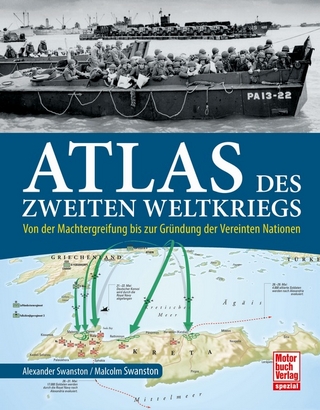
Armed Bluejackets Ashore
Fonthill Media LLc (Verlag)
978-1-62545-082-1 (ISBN)
Among other major navies, that of the United States put armed naval landing parties ashore during the nineteenth and early twentieth centuries. Although done primarily to protect American interests, they also safeguarded international communities against the "savage hordes" of "uncivilized" nations. Specially designed light field guns carried aboard gunboats and larger warships sometimes supported the bluejackets and marines, customarily when larger parties more likely to face sharp actions went ashore. Most American naval landings of the nineteenth century took place in Africa, Asia, and Central and South America, whereas the following century saw landings against larger and otherwise civilized nations such as Mexico and Russia. The last of these landings were made in conjunction with the Allied assaults on North Africa in November 1942.
The first purpose-built landing guns, the bronze Dahlgren muzzleloading smoothbore howitzers, saw extensive deployment during the Civil War, and postwar in Korea. The US Navy's very first steel breechloading guns were landing pieces. Five different marks of 3-inch breechloading guns and several guns of other calibers followed in successive decades, serving for varying periods. The history and characteristics of these landing guns are chronicled.
Philadelphia-born Nelson H. Lawry holds a Ph.D. in cell biology from the City University of New York. Thereafter he received a National Science Foundation postdoctoral fellowship to conduct research at the University of Rochester. Lawry has been a columnist for two newspapers, writing on local history, the history of technology, and the freshwater environment. For his lengthy feature article on the rapacious harvesting of the New Hampshire coastal virgin forest, he won the 1993 John M. Collier Award for Forest History Journalism. Both solely and collaborating with others, he has researched and written extensively on American and British harbor defense and coast artillery. Timber boxed pony truss bridges and naval landing guns are uncommon survivors piquing his interest. An avid photographer, Nelson Lawry resides in rural New Hampshire.
Acknowledgments; Glossary; Introduction; Prefatory An Armed Landing on a Far and Remote Shore; 1 The US Navy's First Landing Gun: The Dahlgren Boat Howitzer; 2 Dahlgren Howitzers in Action During the 1850s and the Civil War; 3 Shinmiyangyo, June 1871; 4 The 1870s-1880s and a New Landing Howitzer; 5 Smaller Caliber Additions for Landing Parties; 6 Into the New Age; 7 American Imperial Adventures; 8 Landing Guns for the Twentieth Century; 9 The Marines Get Their Share; 10 Veracruz, April 1914; 11 World War I and Intervention in Russia; 12 US Naval Landing Guns in the 1920s; 13 US Naval Landing Guns in the 1930s; 14 The Beginning of World War II and the End of US Navy Landing Guns; Retrospective; US Naval Landing Gun Survivors; Index.
| Erscheinungsdatum | 01.06.2024 |
|---|---|
| Zusatzinfo | 167 black and white illustrations |
| Verlagsort | SC |
| Sprache | englisch |
| Maße | 172 x 248 mm |
| Gewicht | 948 g |
| Themenwelt | Natur / Technik ► Fahrzeuge / Flugzeuge / Schiffe ► Militärfahrzeuge / -flugzeuge / -schiffe |
| Geschichte ► Teilgebiete der Geschichte ► Militärgeschichte | |
| Sozialwissenschaften ► Politik / Verwaltung | |
| Technik | |
| ISBN-10 | 1-62545-082-6 / 1625450826 |
| ISBN-13 | 978-1-62545-082-1 / 9781625450821 |
| Zustand | Neuware |
| Haben Sie eine Frage zum Produkt? |
aus dem Bereich


